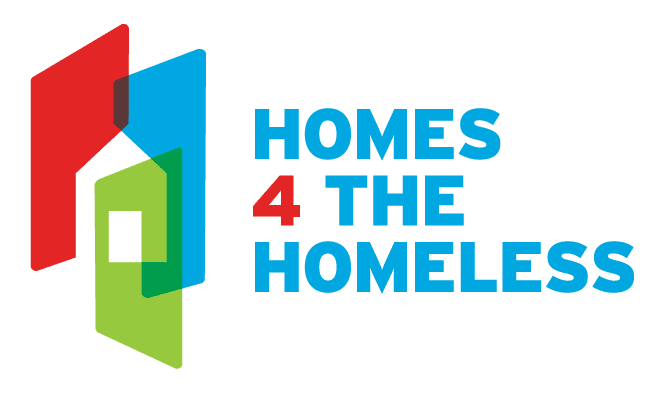Camp Homeward Bound Offers Homeless Youth More Than Fun in Nature—It Gives Them Stability, Healing, and a Chance to Just Be Kids
“The mountains, the islands, the sky – it feels like you’re in heaven,” said 12-year-old Diomer Ortiz from the Bronx. His favorite thing about Camp Homeward Bound wasn’t just the activities—it was the view.
Diomer is one of the 146,000 homeless students in New York City, and one of about 360 who attended Camp Homeward Bound this summer. Run by the Coalition for the Homeless, this sleep-away camp is exclusively for homeless children in NYC.
Set on Lake Kanawauke in the Hudson Valley, just 45 miles north of New York City, the camp has been serving kids for more than 40 years. Each summer, it hosts children ages 7 to 15 for 16 days at no cost—the $4,000 per camper fee is fully covered by donations.
Camp Activities and Community
Camp Homeward Bound offers far more than a break from shelter life. Campers take part in swimming, sports, art, dance, yoga, archery, biking, culinary arts, and music. They garden, explore nature trails, and share stories around campfires.
“We take full advantage of the beautiful environment by providing children living in the NYC shelter system with a variety of adventures and opportunities to be immersed in nature — biking along nature trails, harvesting vegetables in the garden, telling stories around a blazing campfire.”
Staff receive a full week of training from social workers and mental health professionals before the season begins. Junior counselors—all formerly homeless campers—support the kids. Even the art and culinary instructors were once campers themselves, showing what’s possible beyond homelessness.
“So many of these kids have been devalued and dehumanized just going through the shelter experience,” said Dave Giffen, executive director of the Coalition for the Homeless. “So to be able to come to a place like this, where they don’t have to hide it, they don’t have to worry about it — it is a truly freeing experience.”
Homelessness in NYC Schools
The need for programs like this is enormous. According to Advocates for Children of New York, 146,000 students experienced homelessness during the 2023–24 school year. That’s the ninth straight year in which more than 100,000 students were identified as homeless.
- 54% were doubled up due to housing loss or economic hardship.
- 41%—over 60,000 students—spent time in shelters.
- Student homelessness rose in every one of NYC’s 32 school districts. In prior school years, student homelessness was concentrated in upper Manhattan, the southwest Bronx, and parts of northeast and central Brooklyn; however, today, there are homeless students in every school district.
Homeless students in New York City face enormous obstacles in school. Half of all students in temporary housing and 67% of students in shelter were chronically absent in the 2022–23 school year. Students living in shelters dropped out of high school at triple the rate of their permanently housed peers.
Why Support Matters
“While the City works to help families find permanent housing, it must also focus more attention on helping students succeed in school,” said Jennifer Pringle, Director of AFC’s Learners in Temporary Housing Project. “School can be the key to breaking the cycle of homelessness, but so many children, especially those in shelters, continue to fall behind. The City should take steps such as addressing delays in arranging transportation, ensuring families are placed in shelters near their children’s schools, getting rid of 60-day shelter limits, and addressing staffing shortages.”
Pringle’s warning underscores a painful reality: homelessness robs children not only of a stable home but of their right to a fair education. When families are placed in shelters far from their schools, children can spend hours commuting each day—time that could have been spent studying, resting, or simply playing. Chronic staff shortages mean essential supports like counseling, tutoring, or transportation are often delayed or denied altogether. And shelter policies such as the controversial 60-day limits uproot students again and again, forcing them to start over in new schools or miss classes while families scramble to relocate.
These disruptions compound the trauma of homelessness, making it harder for students to keep up academically and socially. Falling behind in school increases the likelihood of dropping out, which in turn perpetuates the cycle of poverty and homelessness into the next generation.
While a summer camp can’t erase poverty or undo the systemic barriers facing homeless students, Camp Homeward Bound provides something equally essential: a space where children can rest, play, and feel valued. It restores a sense of stability, even if just for a few weeks, and shows kids that they deserve joy and opportunity like anyone else.
Homelessness has already stolen too much from New York City’s children. Camp Homeward Bound is a reminder that if we can’t fix everything today, we can at least give them back a piece of childhood—and the hope that things can get better.
As someone who has experienced homelessness in New York City, Jocelyn knows how important it is for children to have safe spaces where they can feel valued. Her reflections on Camp Homeward Bound highlight not just the need for permanent housing solutions, but also the healing power of programs that give kids back pieces of their childhood.
